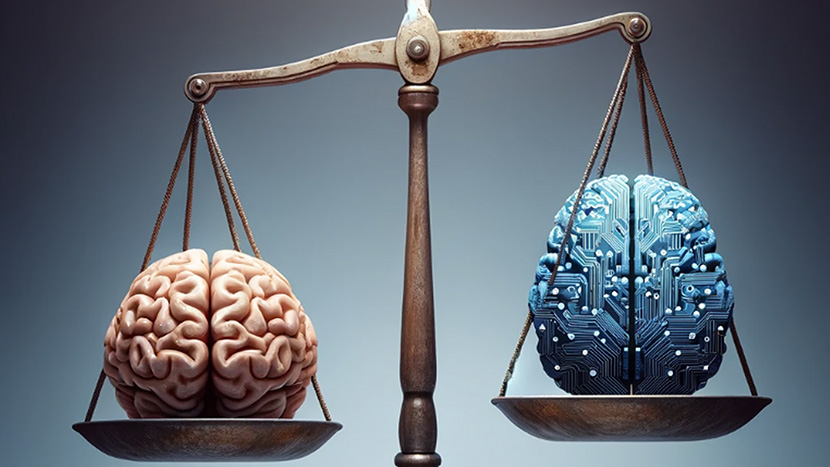The Science Behind Sports Predictions: Algorithms vs. Intuition
In the dynamic world of sports betting, the accuracy of predictions plays a pivotal role. With the advent of sophisticated technologies, the battle between algorithms and intuition has intensified. Many platforms – including the renowned 1xBet – https://1xbet-bangladesh.org/ – leverage advanced algorithms to provide users with insights, yet there’s a persistent debate about the superiority of machine precision versus human instinct. This article delves into the nuances of sports predictions, comparing the algorithmic approach with traditional intuition, and highlighting how both methods impact the decision-making process in sports betting.
The Rise of Algorithmic Predictions
Understanding Algorithms in Sports Betting
Algorithms in sports betting are complex mathematical models that analyze vast datasets to forecast outcomes. These models consider various factors, including team performance, historical trends, weather conditions, and player injuries, to predict the likelihood of specific events.
Key Components of Sports Betting Algorithms:
- Data Analysis: The foundation of any prediction algorithm, involving the examination of historical data and current trends.
- Probability Estimation: Calculating the chances of various outcomes based on statistical analysis.
- Machine Learning: Algorithms learn from new data, refining their predictions over time.
Advantages of Algorithmic Predictions
- Accuracy: Algorithms can process more information than humans, potentially leading to more accurate predictions.
- Objectivity: Unlike humans, algorithms are not biased by emotions or personal preferences.
- Scalability: They can analyze numerous games simultaneously, providing a broad spectrum of betting opportunities.
The Role of Intuition in Sports Predictions
Despite the sophistication of algorithms, many bettors still rely on intuition. This method involves making predictions based on gut feelings, personal experience, and subjective analysis of the game.
The Power of Human Insight
- Understanding Nuances: Humans can perceive subtle nuances that algorithms might overlook, such as team morale or player determination.
- Flexibility: Intuitive predictions can quickly adapt to last-minute changes, such as unexpected player substitutions or weather conditions.
- Experience: Seasoned bettors bring a wealth of knowledge and experience, allowing them to spot patterns or opportunities that might elude algorithms.
Challenges of Relying on Intuition
- Subjectivity: Personal biases can cloud judgment, leading to less objective decisions.
- Inconsistency: Human intuition can be erratic, with accuracy varying significantly over time.
- Emotional Influence: Emotions can heavily influence betting decisions, potentially leading to irrational choices.
Algorithms vs. Intuition: A Balanced Approach
While the debate between algorithms and intuition continues, a balanced approach often yields the best results. Combining the precision of algorithms with the nuanced understanding of human intuition can provide a more comprehensive outlook on sports predictions.
Integrating Both Methods
- Algorithmic Guidance: Use algorithms to narrow down choices and identify promising betting opportunities.
- Intuitive Final Decision: Apply personal insight and experience to make the final betting decision, especially in situations where the algorithmic predictions are too close to call.
The Importance of Discipline
Regardless of the approach, discipline is crucial. Bettors should set clear rules for when to follow algorithmic predictions and when to rely on intuition, avoiding emotional betting and maintaining a strategic approach to betting. This is also important to make sure you set financial limits and gamble responsibly.
Enhancing Predictions with Real-Time Data
The integration of real-time data into prediction algorithms represents a significant leap forward in sports betting. This approach leverages live data from ongoing matches, including player performance, possession statistics, and in-game events, to adjust predictions as the game unfolds. The immediacy of this data allows for a dynamic analysis that can significantly increase the accuracy of predictions. For instance, a sudden shift in the momentum of a game, such as a key player injury or a red card, can drastically alter the outcome, and algorithms that incorporate real-time data can quickly adapt to these changes. This capability not only enhances the precision of predictions but also offers bettors the opportunity to make more informed decisions on live betting markets.
The Social Dimension of Betting Predictions
Another evolving aspect of sports predictions is the incorporation of the social dimension. Social media and online forums have become rich sources of information, where the sentiments and opinions of fans and experts alike can influence betting decisions. Algorithms are now being developed to analyze social media trends, public opinions, and even the psychological factors affecting teams and players. This social listening can uncover insights that traditional data analysis might miss, such as a team’s morale or the psychological pressure on an underperforming player. By combining these social insights with traditional data analysis, bettors and prediction platforms can gain a more holistic view of the likely outcomes, adding another layer of depth to sports predictions.
Conclusion
In the realm of sports betting, both algorithms and intuition offer unique advantages and challenges. Platforms like 1xBet are at the forefront of utilizing technological advancements to enhance betting accuracy. However, the inclusion of human intuition adds a valuable dimension to predictions. Ultimately, the most successful bettors are those who skillfully blend the analytical power of algorithms with the nuanced understanding of human intuition, navigating the betting landscape with a balanced and disciplined approach.


































































































